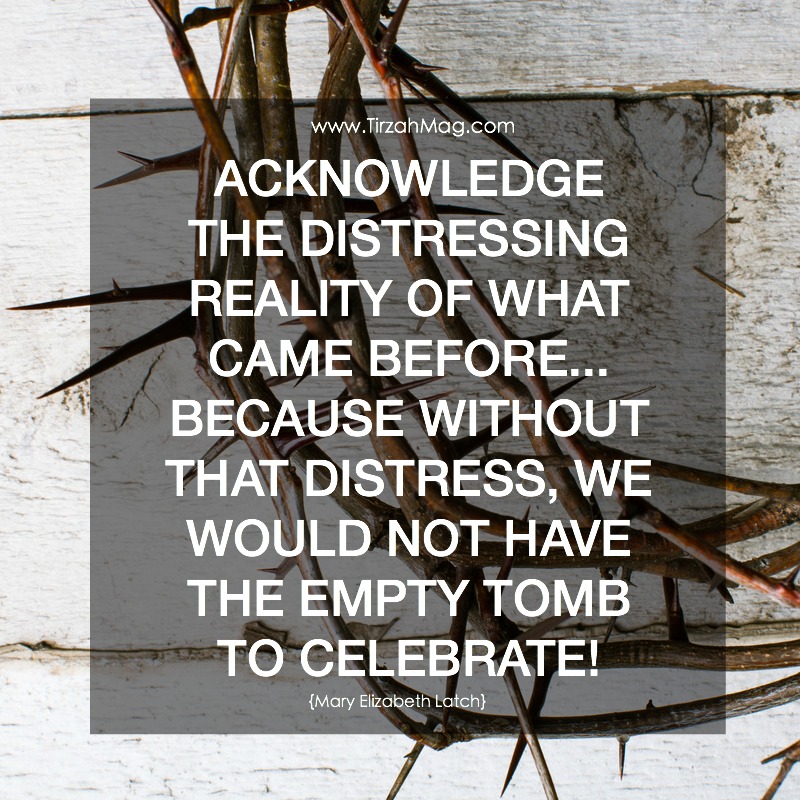Before the Empty Tomb
Then Jesus went with His disciples to a place called Gethsemane, and He said to them, “Sit here while I go over there and pray.” He took Peter and the two sons of Zebedee along with Him, and He began to be sorrowful and troubled. Then He said to them, “My soul is overwhelmed with sorrow to the point of death. Stay here and keep watch with Me.” Going a little farther, He fell with His face to the ground and prayed, “My Father, if it is possible, may this cup be taken from Me. Yet not as I will, but as You will.” -Matthew 26:36-39
Can you fathom the sorrow that Jesus felt in this moment? Has your soul felt overwhelmed with sorrow to the point of death? Have you ever prayed so earnestly that your sweat fell like drops of blood (Luke 22:44)?
You may not have felt these things personally, but you’ve probably read this story. If you’ve been involved in Christian culture long enough, you have heard at least one sermon on Jesus’s prayer in Gethsemane. Perhaps you’ve read a book about the events leading up to the crucifixion. Or you saw The Passion of the Christ when it came out in 2004.
So you’re familiar with this story. And now it’s time, according to the calendar, to talk about the story again. Easter season is upon us. We run the risk, once again, of glossing over the events leading up to the crucifixion and skipping to the part where the tomb is empty. But when we do that, we miss out. We miss out on the sorrow and pain…and the passion.
I’ve been immersed in the story of Gethsemane over the past few days, trying to prepare a lesson for the kids’ class at church. There’s a level of intensity in this scene that I had forgotten about. I was aware that Jesus was not psyched about dying, but that He did it anyways. I was aware that He died a death beyond my comprehension — a death marked by intense pain, humiliation, and sorrow. I was even aware that His body was placed in a tomb for three days until, suddenly, it was not there anymore. But, I have not done anything with this awareness, though.
Instead, I have breezed straight into the glorious resurrection and ascension. I’ve allowed myself to forget about Jesus’s sorrow and pain and humiliation. So when I think about stepping into the classroom with my little friends to teach them about Jesus’s prayer just before His death, I am faced with a challenge.
I can skim over this part of the story. I can say that “Jesus was sad” and tell them that it’s important to pray. Then I can send them off to color a picture of Jesus kneeling in prayer with a serene look on his face. But if we are truly to believe that “the kingdom of heaven belongs” to these little guys (Matthew 19:14), it would be a disservice to deny them the opportunity to dig into Jesus’s experiences.
So when I approach these little friends, we’re going to talk about sorrow. I’m going to ask them, “What is sorrow?” “Have you ever felt sorrow?” “What does it feel like in your head…in your heart…in your toes?” And we’ll talk about taking that intense loneliness, that sadness…and looking to God.
If we are willing to start talking about the reality of Easter and, more importantly, the reality of Christianity, when these children are small, then they will be more empowered to pursue God in a deeper way as they grow older. And they will be less likely to gloss over this story…year after year after year.
But, what about us? Perhaps you, like myself, have fallen into the trap of glossing over the sorrow. You've lost sight of Jesus' emotional devastation prior to His crucifixion. If so, I would encourage you to approach Easter a little differently this year. Don’t skip over the details of the cross to get to the good stuff. Before you take time to celebrate the empty tomb, reflect on the events that led to the empty tomb.
Acknowledge and accept the distressing reality of what came before…because without that distress, we would not have the empty tomb to celebrate.
// image by pixel via lightstock
